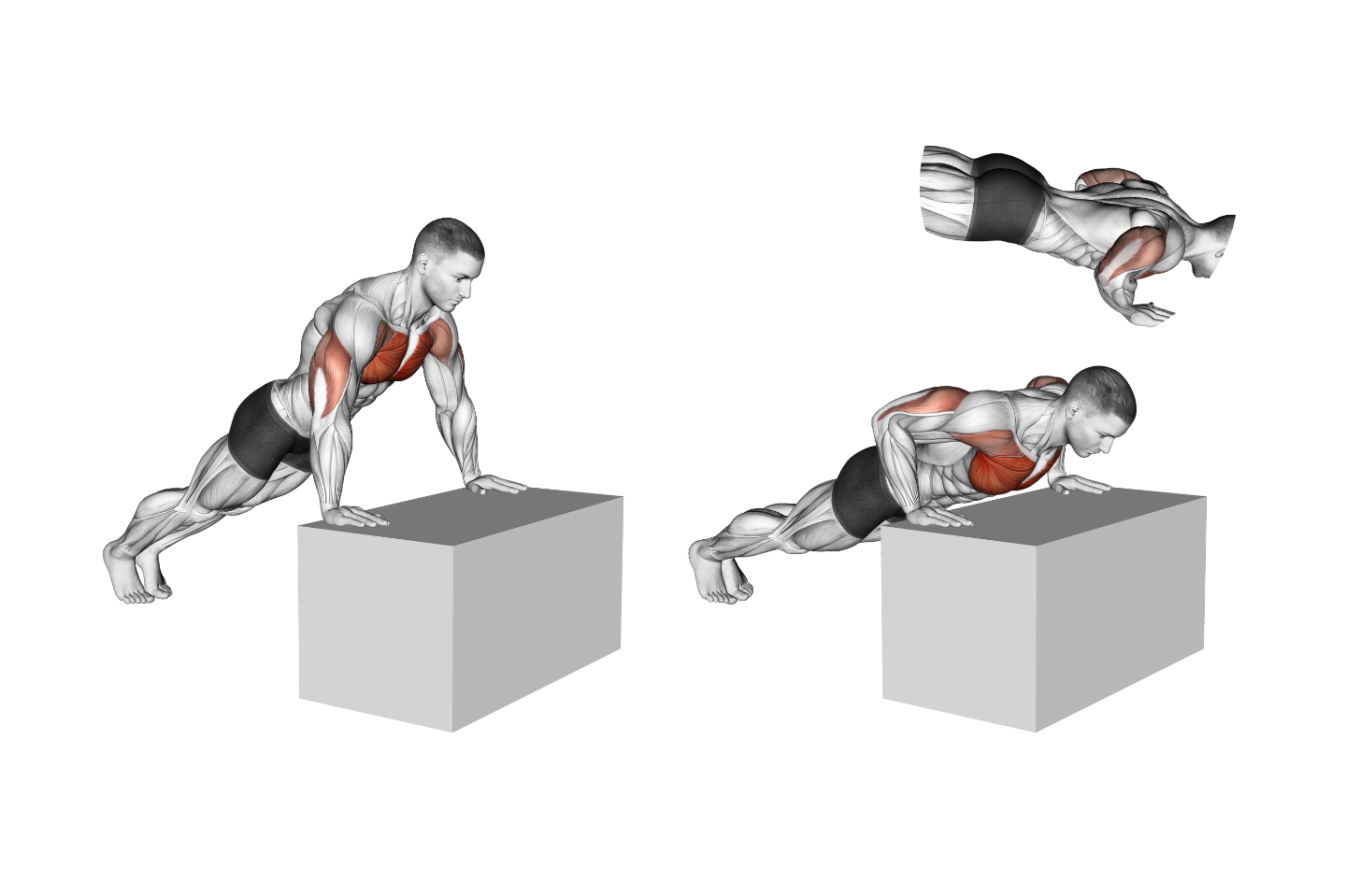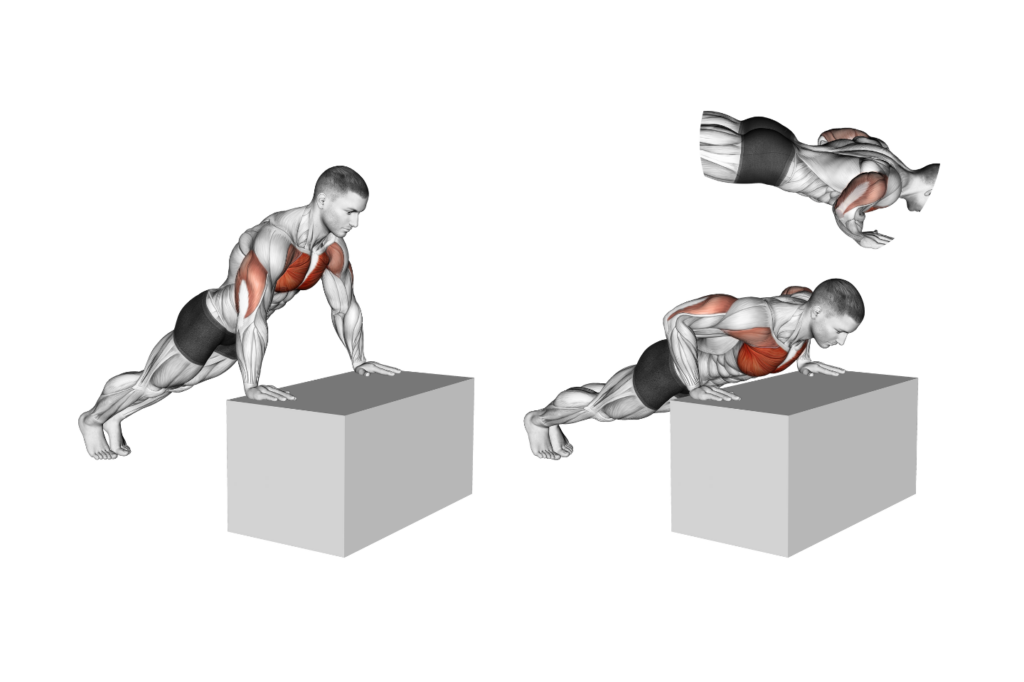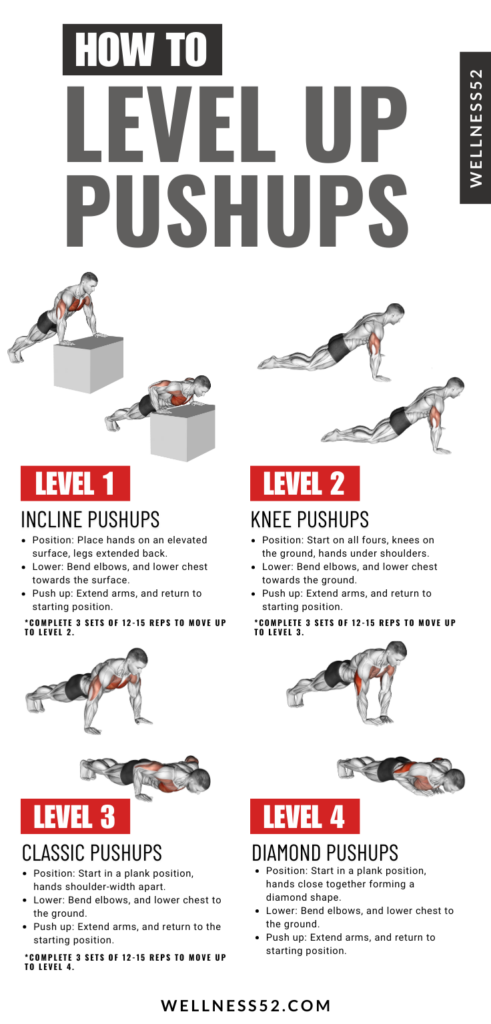
The humble push-up is more than just a gym class staple; it’s a cornerstone of total body strength. Supporting nearly three-quarters of your body weight in the lowest position, the push-up is a testament to human strength and endurance.
Beyond targeting the chest, shoulders, and triceps, this dynamic exercise engages your core, back, and legs, making it a truly holistic workout.
Let’s explore how to master this fundamental movement and build a stronger, more resilient you.
What Muscles Do Push UPS Work

The push-up is a deceptively simple exercise that packs a powerful punch. Targeting multiple muscle groups simultaneously, it’s a cornerstone of any effective workout routine.
Primary Muscles Worked:
- Chest: The push-up primarily engages the pectoralis major and minor muscles, building strength and definition.
- Triceps: These muscles at the back of your upper arm play a crucial role in extending your arm during the push-up.
- Shoulders: The deltoid muscles, particularly the anterior deltoid, are activated to assist in the upward movement.
Secondary Muscles Worked:
- Core: The core muscles, including the abs and lower back, are essential for maintaining proper form and stability during the push-up.
- Legs: The legs contribute to overall body stability and prevent sagging during the exercise. By incorporating push-ups into your workout routine, you can enhance upper body strength, improve core stability, and challenge your entire body.
How to Level Up Your Push-Ups

Level 1: Incline Push-Ups
- Position: Start by placing your hands on an elevated surface, such as a table or chair, with your legs extended back.
- Movement: Lower your chest towards the elevated surface, bending your elbows. Push back up to the starting position.
- Sets and reps: Aim for 3 sets of 12-15 repetitions.
Level 2: Knee Push-Ups
- Position: Start on all fours, with your knees on the ground and hands under your shoulders.
- Movement: Lower your chest towards the ground, bending your elbows. Push back up to the starting position.
- Sets and reps: Aim for 3 sets of 12-15 repetitions.
Level 3: Classic Push-Ups
- Position: Start in a plank position with your hands shoulder-width apart.
- Movement: Lower your chest towards the ground, bending your elbows. Push back up to the starting position.
- Sets and reps: Aim for 3 sets of 12-15 repetitions.
Level 4: Diamond Push-Ups
- Position: Start in a plank position with your hands close together, forming a diamond shape.
- Movement: Lower your chest towards the ground, bending your elbows. Push back up to the starting position.
- Sets and reps: Aim for 3 sets of 12-15 repetitions.
Remember: Proper form is crucial to prevent injuries and maximize the benefits of each exercise. If you’re new to push-ups, start at a level that’s comfortable for you and gradually progress as you get stronger.
Additional Tips:
- Engage your core: Keeping your core tight throughout the movement will improve stability and balance.
- Lower yourself slowly: Control the downward phase of the push-up to increase muscle engagement.
- Vary your grip: Experiment with different hand placements to target different muscle groups.
- Listen to your body: If you experience any pain, stop and rest.
By incorporating these push-up variations into your workout routine, you’ll build upper body strength, improve core stability, and challenge yourself to reach new fitness goals.


